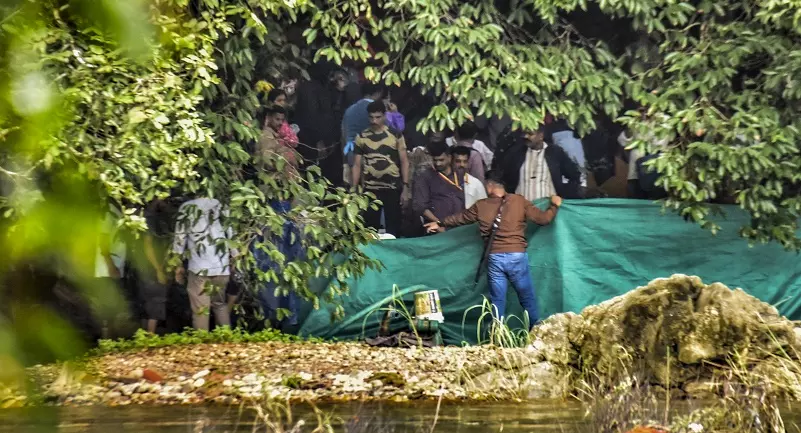
Dharmasthala case: SIT urges Karnataka govt for technological help
Officials say investigators are facing challenges whlle digging due to difficult terrain and incessant rainfall

The Special Investigation Team (SIT), probing the alleged mass burial case in Dharmasthala, Karnataka, has sought technological help from the state government to trace bodies believed to have been buried years ago. Senior advocate CS Dwarakanath, who had appealed to Karnataka Chief Minister Siddaramaiah about the SIT investigation in the case, confirmed to The Federal about the SIT's request for help.
Officials say that the investigators are facing challenges due to the rugged terrain and incessant rainfall, which has left the soil in the forest area near the Netravati River, the focus of the exhumation, extremely loose. It has made manual digging risky and unreliable.
Also read: Dharmasthala case: Another skeleton found; what next?
Technology required to overcome natural challenges
A senior Karnataka home department official said heavy rain and the river’s flow have made identification of the exact burial spots difficult. He added that this has made the use of technology even more necessary.
“Because of continuous rainfall and loose soil, there is a real risk that the skeletons, if they exist, may have moved from the original spot. That’s why technology is needed to detect exact locations without disturbing the area too much,” the official said.
According to him, if skeletons or bodies were buried more than a decade ago, they might have already started disintegrating or scattering due to soil movement.
Also read: Dharmasthala case: 'Teen buried without FIR, autopsy 15 yrs ago', claims new witness
In light of these difficulties, the SIT has requested that the state government borrow the technology used by the National Disaster Response Force (NDRF). Sources said the State Disaster Response Force (SDRF) will approach the NDRF for the technology which is used during rescue operations in landslides and other natural disasters, including the Wayanad tragedy in Kerala in 2024.
If NDRF agrees, equipment such as ground-penetrating radar, thermal-imaging devices and specialised cameras that can read underground areas will be used by experts to help the SIT investigators. These techniques are generally used to track bodies trapped under debris in landslides.
An official from the Karnataka SDRF said while NDRF teams have these tools, the SDRF personnel are trained to use them during landslides to find trapped bodies.
Also read: Dharmasthala case : ‘Govts, police, parties complicit in cover-up’ | Advocate Balan interview
“NDRF will definitely support the SIT if the government approves,” the official added.
“The use of radar technology can help a lot in areas where digging is difficult. Especially in Dharmasthala, where rains are frequent, we need non-invasive tools to avoid disturbing remains.”
Another senior official said that SIT’s request has been received and is being seriously considered.
“We have received a request from the SIT. It is a sensitive case. The use of NDRF support is being actively considered,” he added.
The government is expected to take a decision soon, as the tools and expertise needed are already available with the disaster response teams.
Police, experts support use of modern techniques
A police source said the use of radar is important to avoid unnecessary and blind excavation. “We don’t want to damage any remains by blind digging. GPR and similar tools will help us scan the area and mark the right spots before excavation,” an officer said.
Also read: Dharmasthala case: Karnataka High Court quashes gag order on media
The method is considered safer and more reliable, especially under wet conditions when physical digging could destroy possible evidence.
The current row made headlines after a man had confessed in a local court in July that hundreds of bodies were buried secretly in and around Dharmasthala many years ago. Based on this confession, the SIT launched a wide-scale probe and has been identifying possible burial locations based on statements from the accused and other informants.
One such location — believed to be the 13th suspected burial site — was scheduled for exhumation on Thursday (August 7). However, the operation was cancelled at the last minute.

